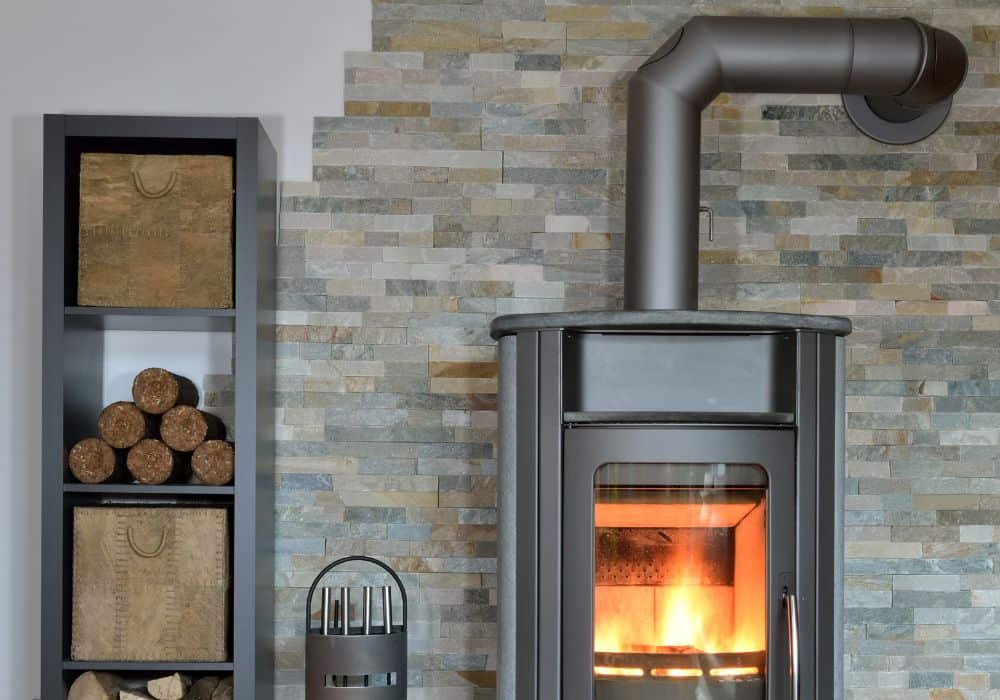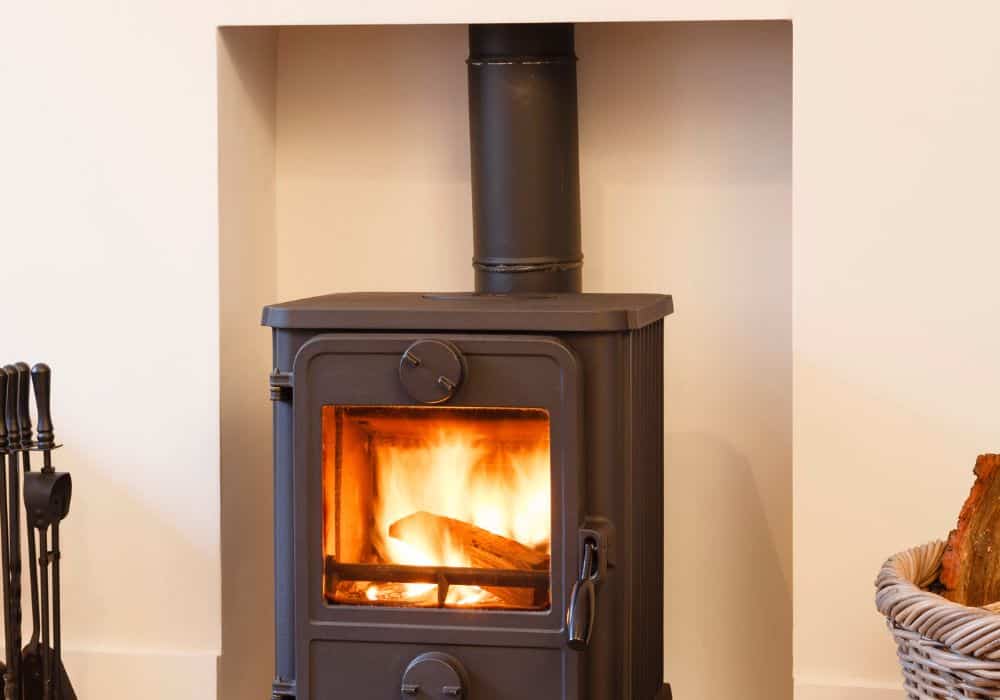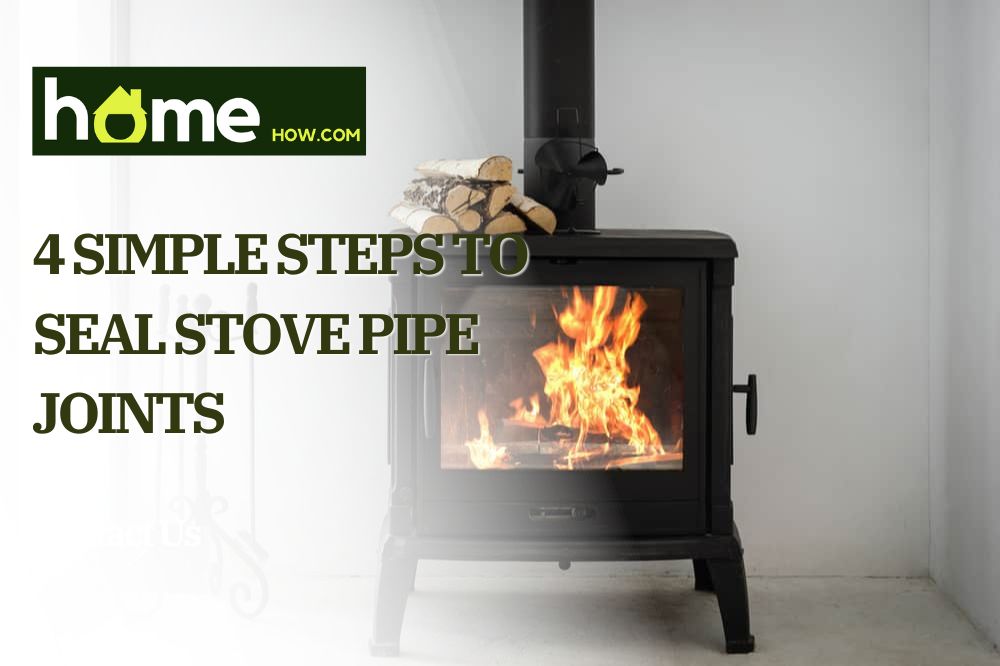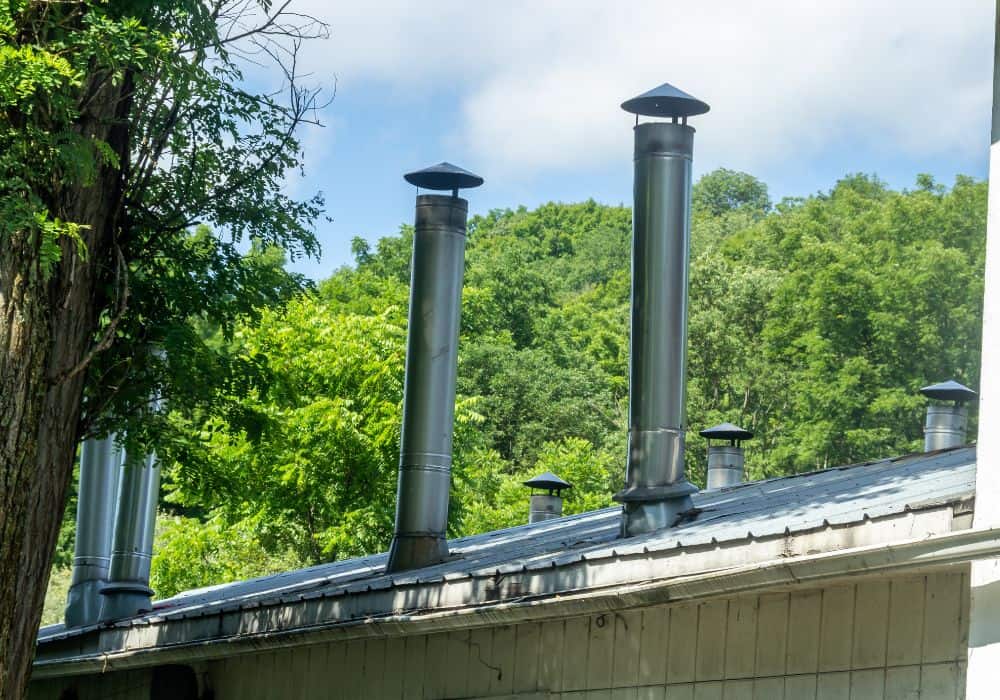Have you recently installed a stove pipe? If done correctly, the smoke should exit through the chimney pipes. But if there are small leaks along the joints, then these gases will just seep through the entire house.
These gaps can also lead to drafts within the system. This may explain why it feels colder inside your house – or why the stove fire isn’t as good/strong as it used to be.
The good news is it’s easy to fix these problems. It’s simply a matter of following this guide on how to seal stove pipe joints.
Let’s begin!
Tools Needed
- Sealant
- Stovepipe cement mixture
- Long chimney brush (or chimney cleaning kit, as needed)
- Putty knife or trowel
- Glue and high-temperature silicone sealant
- Rope and cement
- Flue pipe tape
- Jointing accessory
- Kindling for a small fire
- Tarp
How to Seal Stove Pipe Joints?

If you have gathered the necessary materials stated above, then you may start with the steps below:
Step 1: Examine the Stove Pipe Joints
Before we start checking the joints, let’s first review the parts of your stove pipe (or flue pipe.)
As you see, one section of pipe is found on the wood stove. Another is installed on the pipe attached to the stove, but this depends if the fitting is a male end or a female end.
As with most pipes, the female fitting works to ‘receive’ the male fitting.
Once you’ve familiarized yourself with these parts, you can go ahead and inspect the areas where the pipes meet each other.
You should see a ring, which should be located a few inches from the pipe end. This works to ‘stop’ the piece fitted into it.
When examining the joint, make sure that the pipe is against the ring’s edge. If not, smoke will surely leak into your kitchen.
And even if the joints seem to be installed correctly, it wouldn’t hurt to check if they’re fitted well. Note the presence of three screws, which should be equally installed outside of the pipe joint. These ensure that the fittings attach securely to one another.
Step 2: Clean the Pipes
After examining the pipes, the next thing you need to do is clean the chimney.
When doing so, make sure that the wood pellet stove is closed. Next, place a tarp underneath so it will be easier to clean up after.
Once these preparations are done, insert a long wire brush into the chimney and twist it. This should help you remove the creosote or nests that have built up inside.
Find it hard to clean the chimney with just a brush? You can also follow these tips on how to clean the chimney yourself.
Pro tip: If you can’t seem to remove the debris in your chimney even after following the steps above, don’t hesitate to call a professional cleaner to help you out.
Step 3: Check the Leak Location
If you’re not sure which joints or parts are leaky, then I recommend that you do a ‘test fire.’ This involves burning a small fire in the stove to see where the smoke/gases escape.
When doing a test fire, make sure to keep the damper open to the pipe.
More importantly, only use a few pieces of kindling for the fire. If you end up building a bigger one, you will need to wait a long time before you can seal the joints.
Step 4: Seal the Stove Pipe Joints
Granted that the pipes have already cooled off from your test fire, you will need to do some cleaning before you can seal the joints. All you need is a simple wire brush to remove the debris or rust that may have accumulated inside the pipes.
Once you’re done with this, you may finally go ahead with any of these sealing techniques:
- Cementing/Caulking
When choosing a sealing material, you must select a product that’s meant for a wood stove. It should be able to withstand the high temperatures that the boiler pipes will generate.
Now that you’ve got the right furnace cement or caulking material, you may go ahead and prepare/mix it. Obtain the recommended amount with a putty knife and apply it to the parts where the joints overlap.
But if you want your joints to be sealed better, I recommend applying the cement inside the female fitting.
To do this, you first need to remove the three screws securing the joint (I’ve mentioned this in step 1.) After disassembling the joint, spread the cement/caulk inside the female fitting. Make sure to stick the male end until its crimps are no longer showing.
Reminder: if your male fitting has a bulge at the end, see to it that this area touches the end of the female fitting.
Wait for the cement/caulk to dry according to the manufacturer’s instructions. Some may need to be set overnight, while some may require an electric fan for the drying process.
Regardless of what method you choose, don’t forget to remove the excess cement/caulk from the joints.
Again, you can use a putty knife or trowel (geared at a 45-degree angle) to do this. Time is of the essence for this step, as the cement or caulk may harden right away.
If you do choose to apply cement on the female fitting, remember to reaffix the three screws that secure the joint!

- Applying Sealant on the Joints
An alternative to cementing or caulking the joints is to use high-temperature silicone sealant to secure these parts.
For this method, you first need to block the gaps (if any) with glue or any other suitable material. Once it dries, you can apply the sealant on top of the glue as this will ensure that the joints are secured well.
- Using Rope and Cement
You can also seal the joints by using cement and rope. These items can form a protective seal around the joint, thus preventing draft (and smoke) from entering your house.
Do remember that you can’t use just any type of cement or rope when sealing wood stove joints. As this area is often subject to high temperatures, you will need to use fire cement and non-combustible rope for this project.
The first step to sealing the joints is to wrap the rope around the joints. Make sure it completely covers both ends.
Next, add a layer of fire cement on top of the wrapped rope. Again, make sure that the material covers the rope completely.
Pro tip: If you find it hard to fit the rope tightly over the pipes, you may thin it out with a wire brush. Alternatively, you may opt to fill the gaps with mineral wool.
- Taping
This method is perhaps the easiest way to seal your joints. That’s because all you need to do is apply a high-temperature flue tape around the cleaned/wiped joints.
As long as you keep your wood stove at the recommended temperature of 350 to 400 degrees Fahrenheit, this special tape won’t melt.
- Installing Joint Brackets
Another fuss-free way to seal the joints is to add a second layer of pipe on top. This product, which is known as a jointing accessory or bracket, will help cover the holes/gaps in the joints.
As installation procedures vary according to bracket type/brand, make sure to read the manufacturer’s instructions before you affix them.
FAQs
How do you test the pipe joint seal?
Once the cement/caulk or any other product you have applied has dried, light a test fire to check the joints. If you’ve done a good job of sealing them, you shouldn’t be able to see smoke seeping from these areas.
When should you seal a stove pipe joint?
Experts recommend sealing the stove pipe joint before using it for the first time. This will help protect you from inhaling the smoke and ash that may end up leaking inside the house.
Sealing will also help prevent drafts since cold air can easily enter your home through unsealed pipe joints.
Why should you clean the chimney before sealing the joints?
Animals or birds may have taken up residence in the chimney, especially if you haven’t used the appliance for quite some time. If their nests or other debris continue to block the chimney, the smoke won’t be able to exit freely.
As a result, this smoke may try to find its way out through the pipe joints.
How do you disassemble stove pipe joints that have been cemented?
First, remove the three screws that secure the joint and wiggle it. The furnace cement should come off easily. Although this material is sturdy when left unbothered, the cement can fracture and ‘free’ the joints with the right tugging.
Conclusion
Sealing stove pipe joints will help prevent cold air – and smoke – from entering the house.
To do this, you first need to examine the pipe joints and clean the chimney itself. Next, you need to find the leak (if you don’t know where they are yet.)
After doing so, you may seal the joints through any of the following methods:
- Cementing/caulking
- Applying sealant on the joints
- Using rope and cement
- Taping
- Installing joint brackets
If you have any more questions regarding the sealing process, don’t hesitate to post a comment below!

